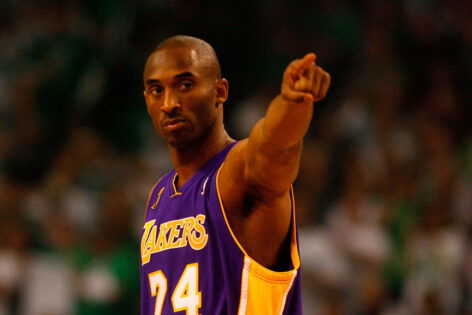It was a moment frozen in time—not just for Los Angeles Lakers fans, but for the entire basketball world. The date was April 12, 2013, and Kobe Bryant was in full command of a must-win game against the Golden State Warriors. The stakes were high, the minutes relentless, and the pressure immense. But what followed in those final minutes remains one of the most iconic moments in NBA history—a moment that defined the very spirit of the “Mamba Mentality.” And yet, it began with a simple drive past a young Harrison Barnes.
Midway through the fourth quarter, with the Lakers trailing and Bryant carrying the load, he collapsed to the floor on a non-contact play, grimacing and clutching his left heel. That was the exact moment when Kobe Bryant—34 years old and in his 17th NBA season—tore his Achilles tendon. Still, in true Kobe style, he stood up, hobbled to the free throw line, and calmly sank two shots to tie the game at 109. Only then did he walk off the court. Walked off. Not stretchered off!
“Just tired in the locker room, upset and dejected and thinking about this… mountain, man, to overcome,” Bryant later shared. “But then your kids walked in, and you’re like, I gotta set an example. ‘Daddy’s going to be fine. I’m going to do it.” Those free throws weren’t just points—they were a declaration.
And according to longtime Lakers trainer Gary Vitti, Bryant even used the moment to take a jab at Paul Pierce, insisting on walking himself off the court, unlike Pierce’s famously dramatized wheelchair exit years earlier. He finished the game with 34 points, and the Lakers won the game 118–116, barely keeping their playoff hopes alive. Though Kobe Bryant’s season ended that night, his effort helped L.A. secure a postseason spot, only to be swept aside by the Spurs in the first round.
Lakers Kobe Bryant against the Rockets at the Staples Center Sunday. (Photo by Wally Skalij/Los Angeles Times via Getty Images)
Bryant’s recovery was anything but simple. Surgery came the very next day, performed by Dr. Neal ElAttrache, who likened the delicate repair to “stitching together two ends of a mop.” The path back was slow and intense, filled with anti-gravity treadmills, rehab workouts, and constant monitoring. “It’s progressing faster than everybody expected,” Kobe said in July, just three months after surgery. “I should be able to be more active with conditioning in the middle of August… It’s crazy.”
By November, Bryant was running drills, participating in five-on-five scrimmages, and closing in on a comeback. On December 6, he finally announced his return via Facebook, setting the date for December 8 against the Toronto Raptors—the same team he once dropped 81 points on. After nearly eight months of grueling recovery, the Mamba was back.
And now, more than a decade later, that unforgettable night is etched into NBA history… and memorabilia. In 2024, the Nike Kobe 8 Elite sneakers that Bryant wore when he tore his Achilles sold at auction for a staggering $660,000. The shoes, still carrying visible creases from that intense game, were described by Sotheby’s as representing “the most emblematic moment of the Mamba Mentality.” The auction drew massive interest from collectors worldwide, eager to own a physical piece of one of basketball’s most legendary moments. The game-worn jersey from that same night had already fetched $1.2 million earlier in the year, just more proof that Kobe’s legacy is both priceless and eternal.
The post When Did Kobe Bryant Tear His Achilles? Know More About Lakers Legend’s Major Injury appeared first on EssentiallySports.



